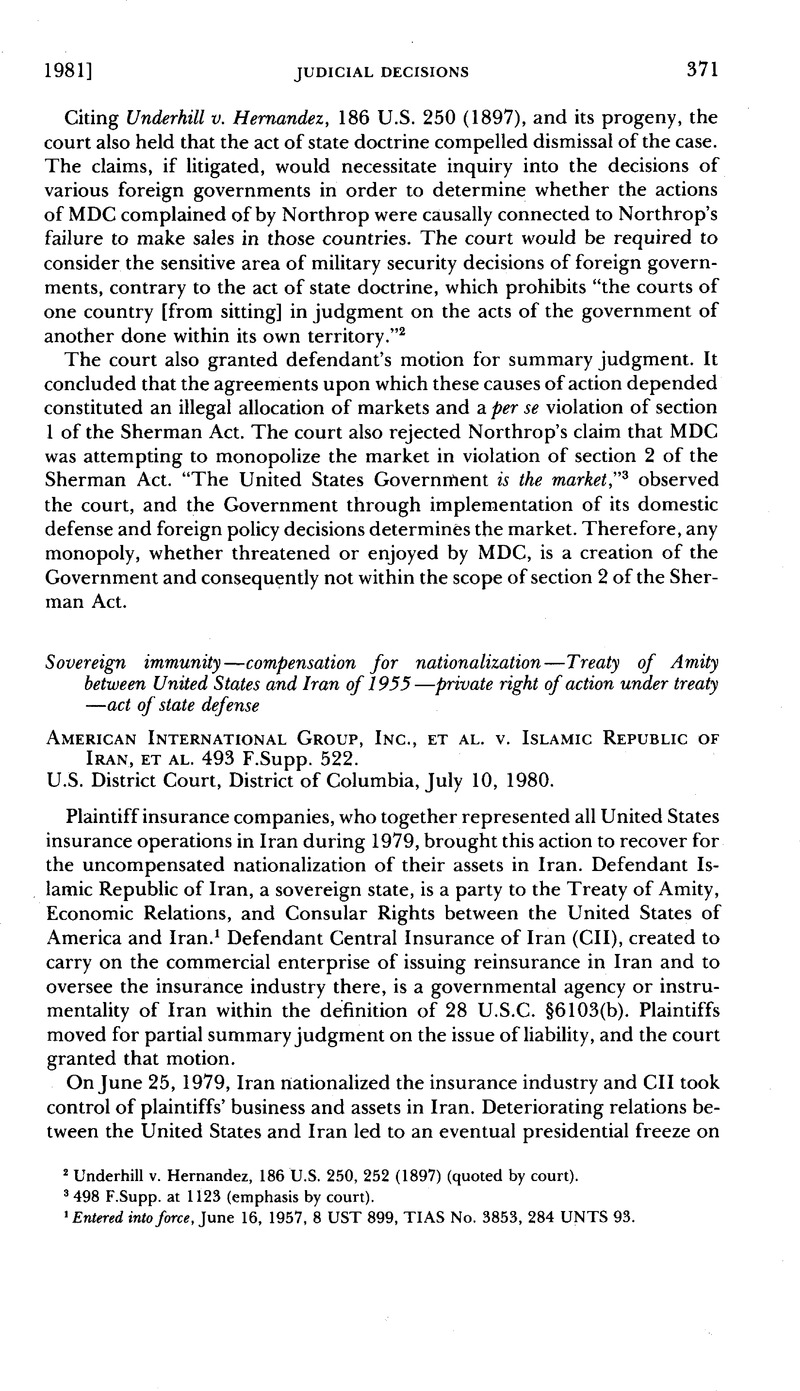Article contents
American International Group, Inc., et al. v. Islamic Republic of Iran, et al. 493 F.Supp. 522
Published online by Cambridge University Press: 27 February 2017
Abstract

- Type
- Judicial Decisions
- Information
- Copyright
- Copyright © The American Society of International Law 1981
References
1 Entered into force, June 16, 1957, 8 UST 899, TIAS No. 3853, 284 UNTS 93.
2 Executive Order 12170,44 Fed. Reg. 65729 (Nov. 15,1979); reprintedin 74 AJIL428 (1980).
3 UNGA Res. 1803 (XVII) (Dec. 14, 1962), para. 4.
4 493 F.Supp. 522, 525 (citing Asakura v. Seattle, 265 U.S. 332 (1924); Kolovrat v. Oregon, 366 U.S. 187 (1961); Head Money Cases, 112 U.S. 580 (1884); and Hauenstein v. Lynham, 100 U.S. 483 (1879)).
5 Art. IV, para. 2 reads: Property of nationals and companies of either High Contracting Party, including interests in property, shall receive the most constant protection and security within the territories of the other High Contracting Party, in no case less than that required by international law. Such property shall not be taken except for a public purpose, nor shall it be taken without the prompt payment of just compensation. Such compensation shall be in an effectively realizable form and shall represent the full equivalent of the property taken; and adequate provision shall have been made at or prior to the time of taking for the determination and payment thereof.
6 28U.S.C. §§1602-1611.
7 28 U.S.C. § 1605(a)(2).
- 1
- Cited by


